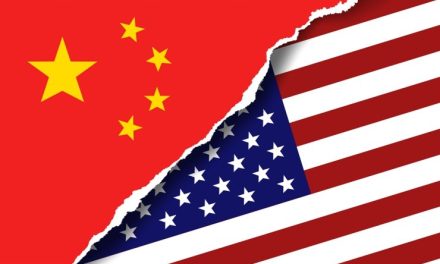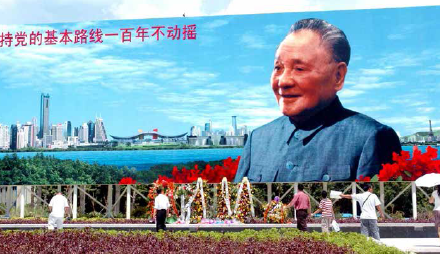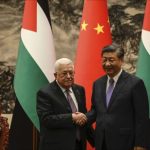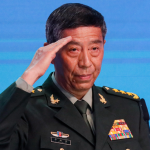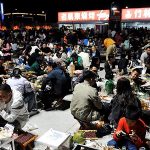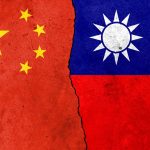By Jianli Yang and Bradley A. Thayer
The recent Japan-U.S. summit was valuable, as it demonstrated tremendous alignment between the United States and Japan on diplomatic and security issues. An analysis of Japan’s National Security Strategy (NSS) also reveals a close synergy between the two countries’ strategic objectives. The close alliance they had during the Cold War has been sustained in the post-Cold War period due to the growing threat from China.
The tone and content of the Tokyo-Washington joint statement differs significantly from those in previous statements. Typically, Japan is careful to include language in such documents that is not to be perceived as directly targeting a particular country. This time, however, the statement strongly criticized Russia, China, and North Korea, and did not mince words on China’s threat to Taiwan.
The mutual security treaty between Japan and the United States commits each country to significant military and additional commitments for the benefit of the other. Both sides agree that China’s foreign policy seeks to reshape the international order, and that such behavior is of grave concern to the alliance and the international community. China represents the greatest strategic challenge in the Indo-Pacific region and beyond. At the recent summit, the two allies reaffirmed cooperation to employ effectively Japan’s counterstrike capabilities against Chinese targets in close coordination with the U.S. Japan’s increasing capabilities are welcome news in Taipei. In addition, Washington and Tokyo have substantially aligned their Indo-Pacific postures.
Meanwhile, Japan’s recently updated NSS notes that China’s steadily increasing defense spending is aimed at enhancing its military power, including nuclear and missile capabilities. It also noted China’s attempts to unilaterally change the status quo by force in the maritime and aerospace domains, including in the East and South China Seas, and its intensified military activities around Taiwan. China, for its part, strongly believes that the doubling of Japan’s defense spending (to two percent of the country’s GDP) and counterstrike capabilities outlined in the NSS were dictated by the U.S., primarily to counter China’s presence in all security domains.
Notable as well is the warming relationship between Tokyo and New Delhi. Over the past decade, India and Japan have made significant progress in promoting joint efforts for mutual security since the signing of the India-Japan Joint Declaration on Security Cooperation in 2008, and they hope to further deepen bilateral security and defense cooperation through established mechanisms. Both countries regularly participate in three joint exercises — two at sea (JIMEX and Malabar) and one on land (Dharma Guardian). They also recently held their first-ever joint fighter-jet exercise. These exercises are essential for ensuring that the Japanese and Indian militaries can cooperate to advance their national-security interests and that they are able to work with the militaries of their allies and partners, most importantly Australia, the United States, and perhaps in time the Philippines and Taiwan as well.
Moreover, Japan and India are part of the Quadrilateral Security Dialogue (QUAD) alliance. In addition, Japan and India have separate bilateral and trilateral agreements with the United States and Australia under various frameworks, including the India-Japan-Australia Supply Chain Resilience Initiative (SCRI); the India-U.S. Logistics Exchange Memorandum of Agreement (LEMOA); and the India-Japan Acquisition and Cross-Servicing Agreement (ACSA).
China’s suspicion of Japan is based upon the history of Japan’s invasions and Tokyo’s close alliance with the United States. Beijing’s relationship with New Delhi has experienced considerable variation. There was a warm relationship at the outset of Cold War which reached its height at the 1955 Bandung Conference. Low points were the wars that China and India fought in 1962, and many border crises, including in 1967, 1987 and most recently 2020. China’s support for Pakistan, particularly in the wars of 1965, 1971, and numerous crises over Kashmir, is also a source of chronic tension in the relationship. Although China recognizes India’s right to pursue an independent foreign policy, Beijing is certain to view New Delhi’s increasing closeness to Japan with suspicion. Given Tokyo’s closeness to Washington, China senses that the United States could use Japan as an alternative avenue to foster and sustain improved relations with India, albeit indirectly, on security and defense issues.
Through the QUAD Australia, Japan, the U.S., and India have reaffirmed the importance of a free and open Indo-Pacific. China refers to the QUAD framework as a “mini-NATO” and has criticized the U.S. for intervening in Indo-Pacific affairs.
Adding to the prevailing geopolitical complexity, the Russian-Ukrainian war is also contributing to growing friction in Sino-U.S. relations, leading to a new Cold War with the emergence of two power blocs. Japan has followed the U.S. line on the Ukraine issue, consistently providing all possible support to Ukraine, even at the risk of its relations with Russia. Meanwhile, India has maintained a neutral stance due to its traditional relationship with Russia and the fact that Russia remains an important supplier for the Indian military and for India’s energy needs.
China believes that India’s unique economic and strategic geography (India’s dangerous border issues with China, its ties with Russia, and its special relationship with the U.S.) makes New Delhi a geopolitical hotspot. Beijing hopes that India will struggle in its relations with its pro-Ukrainian partners Australia, Japan, and the United States.
Under such circumstances, one possibility is that Beijing will respond by attempting to keep India (a member of the QUAD but neutral on the Russian-Ukrainian war) in its good graces and dissuading it from moving closer to the U.S. bloc. This idea may be encouraged by a modest improvement in Australia’s relations with China. Alternatively, if China continues to feel that India is being drawn into the opposite bloc, Beijing may choose to deter New Delhi through even harsher means, such as provoking another Sino-Indian border standoff.
Separately, the trilateral security alliance between Australia, the United Kingdom, and the United States (AUKUS) is perceived by China as an immediate and more security- and military-oriented nascent bloc than the QUAD is at present. China will therefore be watching closely to see whether Japan and India join the pact. The logic of strategy suggests that Tokyo and New Delhi are likely to do so.
As India’s strategic interests are with the QUAD and are likely only to deepen as the threat and bellicosity from China increase, and Beijing’s demands on the border and its support for Islamabad will not change, Sino-Indian relations will worsen. Therefore, the world must expect that Beijing’s relations with most of the great powers will worsen. Only Beijing’s relationship with Russia, a great power only by account of its nuclear arsenal, will remain positive from Beijing’s perspective, as China’s influence is only growing within Russia due to Russian leader Vladimir Putin’s disastrous decision to attack Ukraine. It is a classic example of “you reap what you sow,” China has only itself to blame for its geostrategic predicaments.
Jianli Yang, a former political prisoner of China and survivor of the Tiananmen Square massacre, is founder and president of Citizen Power Initiatives for China and the author of For Us, The Living: A Journey to Shine the Light on Truth.
Bradley A. Thayer is Director of China Policy at the Center for Security Policy. He is the coauthor of Understanding the China Threat.


